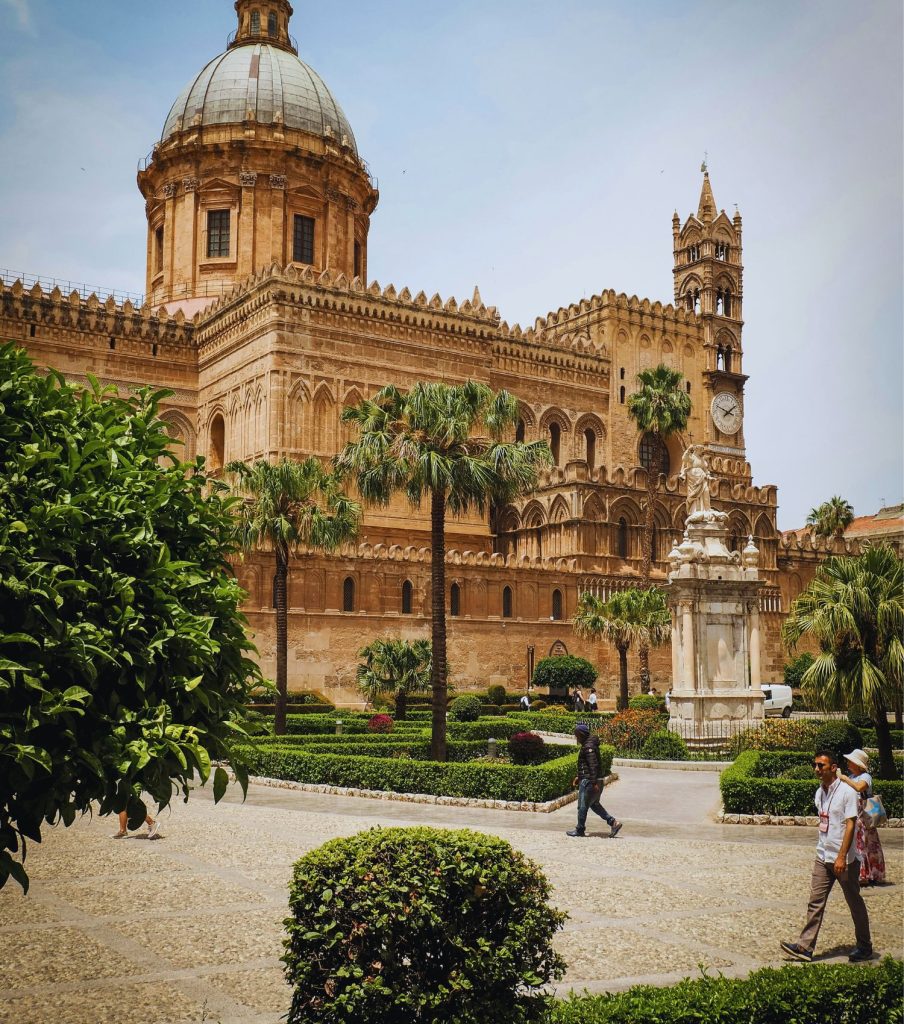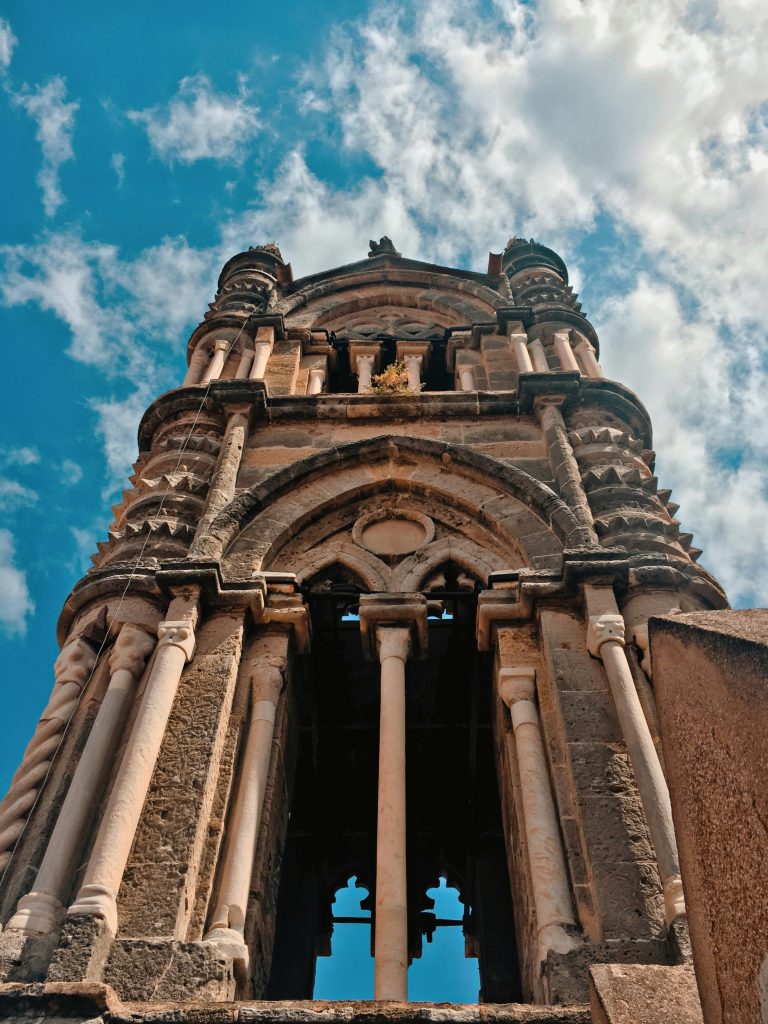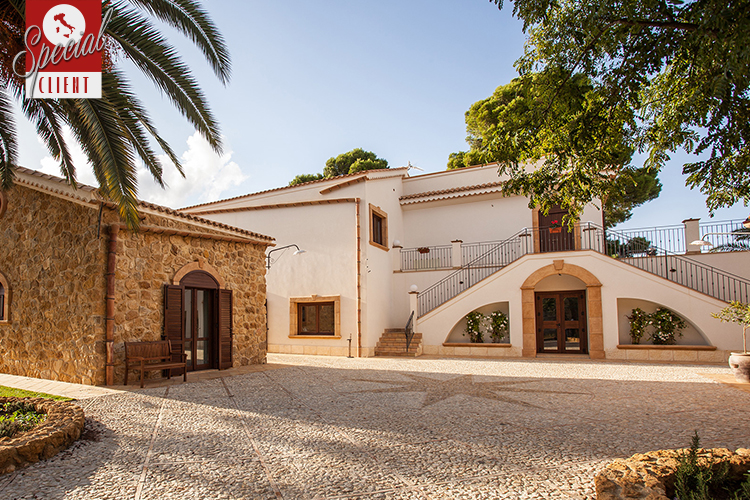Palermo boasts an immense wealth of historical and cultural heritage, reflecting its thousand-year history. The Cathedral of the Assumption is one of these. In addition to representing a symbol of the city, it is also a masterpiece of sacred art that reflects the various influences that helped define the capital.
The Cathedral of the Holy Virgin Mary of the Assumption, commonly called Palermo Cathedral or Palermo Cathedral, is a must for devotees, art lovers and curious. Its importance is such that it was included in the UNESCO heritage.
Every detail of the Cathedral of Palermo is a tangible description of the cultures and dominations that have left their mark on the history of the island.
The architecture of the Cathedral of Palermo tells its story
The Cathedral of the Assumption contains different styles, considering the initial construction on the remains of an early Christian basilica and a subsequent transformation first into a mosque with Arab domination and later into a church in the Norman era. The primary structure in its current form comes from the church commissioned by Archbishop Gualtiero Offamilio.
The eye is immediately captured by the bell tower and the arched bridge that connects the tower and the church, the domes and the complexity of the structure that changes depending on the perspective.
From the main entrance along the western façade (the one on Via Matteo Bonello) you can see the arches that recall the Islamic architecture and various statues of saints. Changing position, you can admire the remains of a monastery and a pronaos with columns in the northern façade (the one on Via Incoronazione); inlaid decorations and statues in the eastern façade (the one on Via Simone Beccadelli in Bologna); Gothic portico with decorations and intricate details, such as the mosaic representing the Virgin and an engraving of the Koran on a column, in the southern façade (the one on Corso Vittorio Emanuele).

Foto : Unsplash
The interior of the cathedral, renovated between the eighteenth and nineteenth centuries on the project of Ferdinando Fuga, follow the neoclassical style of the time and present a striking fusion of architectural and decorative elements with the Norman base of origin.
The naves that open from the main one host several chapels, among which stands the chapel of the royal tombs. Among those buried in the Cathedral of Palermo, the presence of Emperor Frederick II stands out, whose red porphyry sarcophagus proves its importance.
Among the other testimonies of inestimable value are the crypt dating back to the sixth century AD, the altar of the crucifix and the sumptuous ciborium of the seventeenth century, adorned with precious stones.
The chapel dedicated to Saint Rosalia, guardian of the soul of the city, deserves special mention. Here, the attention is captured by a silver urn that houses the relics of the saint and the walls of the chapel adorned with fine marble carvings of neoclassical style.
Finally, the Cathedral of Palermo also boasts a unique curiosity: the sundial inserted in the marble of the central nave. Thanks to a solar ray filtering through the dome, it shows the time through the engraved zodiac signs.
How much does the ticket to enter the Cathedral of Palermo cost?
With its wealth of works and details and its complexity of styles, the Cathedral of the Assumption continues to fascinate visitors.
The Cathedral of Palermo is open every day and access is free, while to visit the crypt, the rooms of the treasure, the panoramic rooftops and the area of the tombs you need to buy a ticket.
The price of the ticket changes according to the areas you choose to visit: Roofs, Royal Tombs, Crypt, Apses and Treasure; Roofs and Royal Tombs; Royal Tombs, Crypt, Apses and Treasure; Royal Tombs.

Foto: Unsplash
What to see in Palermo?
The outside and what’s inside the Cathedral of Palermo are just some of the must-see highlights of Palermo. The city is rich in historical and cultural treasures.
In addition to the Cathedral of Palermo, the Church of Santa Caterina d’Alessandria (one of the oldest in the city), the Church of Jesus (an excellent example of the splendor of Sicilian Baroque) and the Church of San Cataldo are worth a visit (recognizable by the red domes in Arabic style and the Romanesque columns).
It is worth visiting the Martorana Church, built for the Norman king Roger II, as an example of Byzantine architecture in Italy. Its beauty is amplified by the contrast between the original Arab-Norman style and the baroque additions, which is why it has been included in the list of UNESCO sites.
Walking through the narrow streets of the Kalsa you can admire the influence of the Arabs and how the neighborhood has adapted over the centuries.
Among the places of great charm not to be missed are the Catacombs of the Capuchins. Located under the Capuchin Convent, these galleries served to bury the friars themselves and other prominent personalities, both religious and lay, from the seventeenth to the twentieth century.
Completely changing atmosphere, you can visit the Teatro Massimo, considered the largest opera house in Italy and one of the most impressive in Europe and famous for its exceptional acoustic performance and the richness of its architecture.
Other places not to be missed if you visit the city are the Norman Palace (ancient royal residence and current seat of the Sicilian Regional Assembly) and the Palatine Chapel (encounter between Christian elements and Islamic architectural style).
Not just culture. Palermo is a seaside city, so those who visit it can also enjoy the beautiful beaches that surround it, such as the beach of Model, for a refreshing break from the chaos of the city.
The gastronomy of Palermo not to be missed
The journey to discover Palermo would be incomplete without the taste of the gastronomy of Palermo rich in intense flavors and ancient traditions that reflect the history and culture of the city.
Among the culinary experiences not to be missed are the symbols of street food, that is arancina (balls of fried rice and stuffed with ragout, peas and mozzarella), panelle (pancakes of chickpea flour), croquettes (potato croquettes) and sfincione (soft pizza topped with tomato, anchovies, onions and caciocavallo).
Those who love to enjoy food in peace can enjoy the typical dishes in one of the local scattered along Palermo: caponata, pasta with sardines, pasta alla Norma, pasta with Tenerumi, stigghiola, swordfish and more.
The taste buds of the most greedy will live a real party thanks to the many Sicilian desserts, from cannoli to cassate matching granita and brioche.
To accompany the culinary journey there is a great variety of wines, such as Nero d’Avola reds, Cabernet Sauvignon and Merlot and the fresh and fragrant whites Grillo, Catarratto and Inzolia.
Copertina: Unsplash



